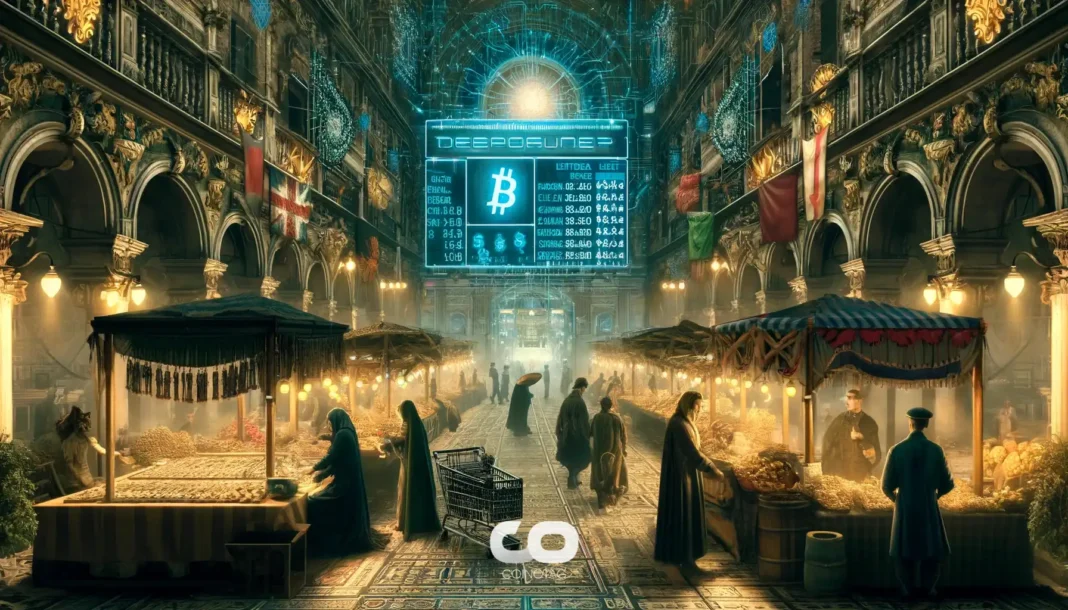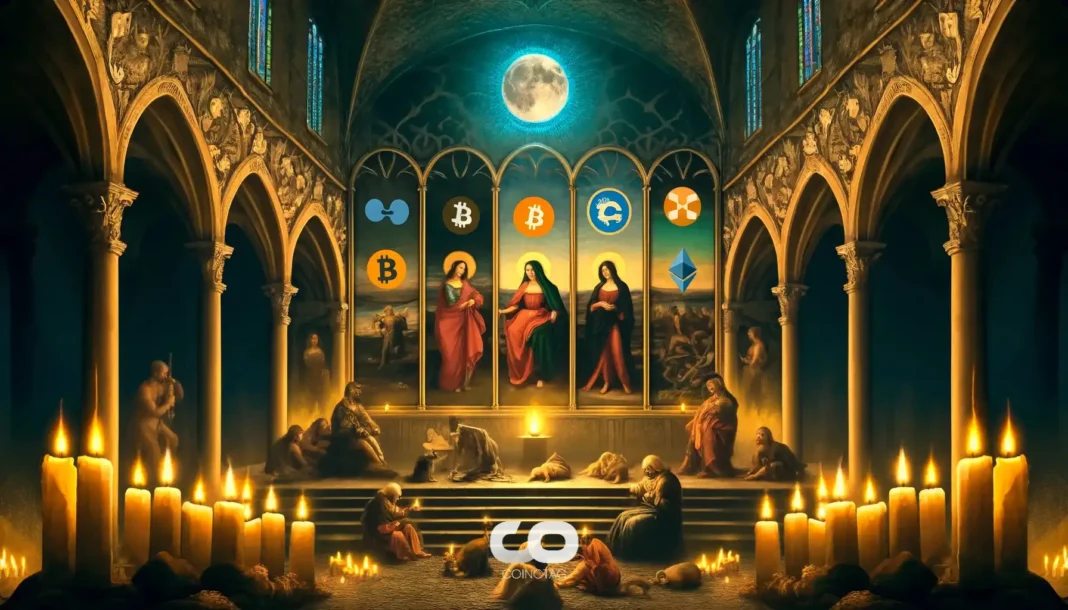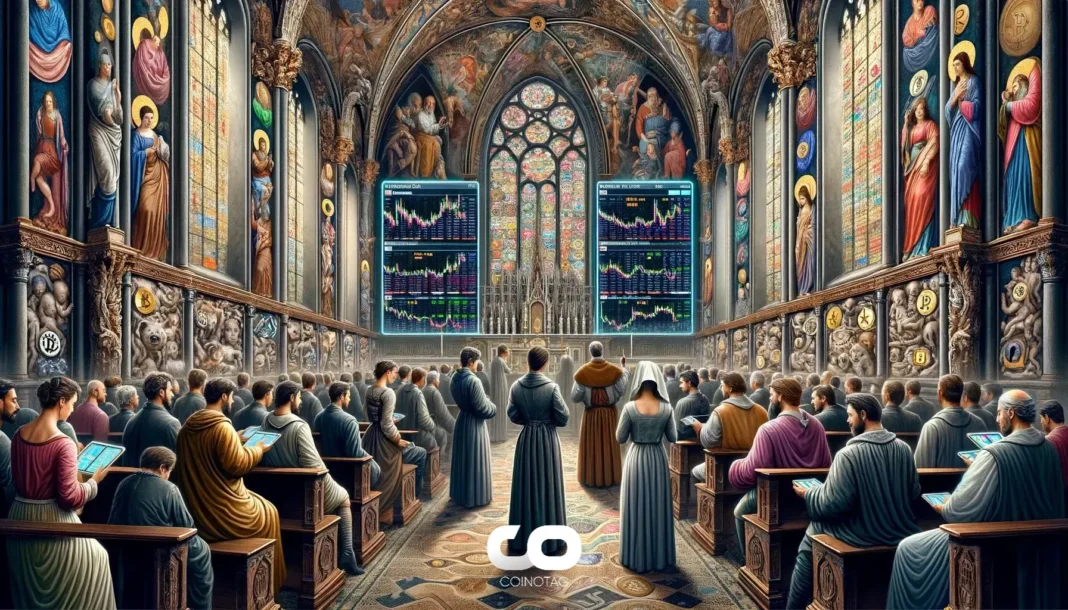| COINOTAG recommends • Exchange signup |
| 💹 Trade with pro tools |
| Fast execution, robust charts, clean risk controls. |
| 👉 Open account → |
| COINOTAG recommends • Exchange signup |
| 🚀 Smooth orders, clear control |
| Advanced order types and market depth in one view. |
| 👉 Create account → |
| COINOTAG recommends • Exchange signup |
| 📈 Clarity in volatile markets |
| Plan entries & exits, manage positions with discipline. |
| 👉 Sign up → |
| COINOTAG recommends • Exchange signup |
| ⚡ Speed, depth, reliability |
| Execute confidently when timing matters. |
| 👉 Open account → |
| COINOTAG recommends • Exchange signup |
| 🧭 A focused workflow for traders |
| Alerts, watchlists, and a repeatable process. |
| 👉 Get started → |
| COINOTAG recommends • Exchange signup |
| ✅ Data‑driven decisions |
| Focus on process—not noise. |
| 👉 Sign up → |
Polkadot Phase 2, enacted via Referendum 1721, ends parachain slot auctions and introduces elastic scaling and EVM compatibility to broaden developer access. The upgrade targets a lower DOT inflation trajectory (around 3.1% by 2026) and aims to boost liquidity and on‑chain activity.
-
Parachain auctions abolished, replaced by elastic scaling for simpler onboarding.
-
Phase 2 adds EVM compatibility to accelerate developer integration and tooling reuse.
-
DOT inflation is forecast to decline toward ~3.1% by 2026, which may improve long‑term liquidity.
Polkadot Phase 2: Referendum 1721 ends parachain auctions and adds EVM compatibility — read how developers and DOT holders may benefit. Learn next steps.
| COINOTAG recommends • Professional traders group |
| 💎 Join a professional trading community |
| Work with senior traders, research‑backed setups, and risk‑first frameworks. |
| 👉 Join the group → |
| COINOTAG recommends • Professional traders group |
| 📊 Transparent performance, real process |
| Spot strategies with documented months of triple‑digit runs during strong trends; futures plans use defined R:R and sizing. |
| 👉 Get access → |
| COINOTAG recommends • Professional traders group |
| 🧭 Research → Plan → Execute |
| Daily levels, watchlists, and post‑trade reviews to build consistency. |
| 👉 Join now → |
| COINOTAG recommends • Professional traders group |
| 🛡️ Risk comes first |
| Sizing methods, invalidation rules, and R‑multiples baked into every plan. |
| 👉 Start today → |
| COINOTAG recommends • Professional traders group |
| 🧠 Learn the “why” behind each trade |
| Live breakdowns, playbooks, and framework‑first education. |
| 👉 Join the group → |
| COINOTAG recommends • Professional traders group |
| 🚀 Insider • APEX • INNER CIRCLE |
| Choose the depth you need—tools, coaching, and member rooms. |
| 👉 Explore tiers → |
What is Polkadot Phase 2 (Referendum 1721)?
Polkadot Phase 2 is a protocol milestone enacted by Referendum 1721 that abolishes parachain slot auctions and introduces elastic scaling plus EVM compatibility. The change is designed to simplify developer onboarding, increase composability with EVM tooling, and moderate DOT inflation through economic adjustments.
How does Referendum 1721 remove parachain auctions and what replaces them?
Referendum 1721 cancels the parachain slot auction mechanism and replaces it with elastic scaling and shared routing. Elastic scaling allows projects to spin up parachain-like environments without winning auction slots. This reduces barriers to entry and is intended to keep network resources more fluid and liquid.
| COINOTAG recommends • Exchange signup |
| 📈 Clear interface, precise orders |
| Sharp entries & exits with actionable alerts. |
| 👉 Create free account → |
| COINOTAG recommends • Exchange signup |
| 🧠 Smarter tools. Better decisions. |
| Depth analytics and risk features in one view. |
| 👉 Sign up → |
| COINOTAG recommends • Exchange signup |
| 🎯 Take control of entries & exits |
| Set alerts, define stops, execute consistently. |
| 👉 Open account → |
| COINOTAG recommends • Exchange signup |
| 🛠️ From idea to execution |
| Turn setups into plans with practical order types. |
| 👉 Join now → |
| COINOTAG recommends • Exchange signup |
| 📋 Trade your plan |
| Watchlists and routing that support focus. |
| 👉 Get started → |
| COINOTAG recommends • Exchange signup |
| 📊 Precision without the noise |
| Data‑first workflows for active traders. |
| 👉 Sign up → |
Polkadot founder Gavin Wood has long emphasized transparent governance. He has said that Polkadot prioritizes clear, community-driven protocol decisions, a principle reflected in the referendum process.
Why does Phase 2 enable EVM compatibility and who benefits?
Phase 2 integrates EVM compatibility to allow Ethereum tooling, smart contracts, and developer skills to run on Polkadot-based execution environments. This benefits smart-contract developers, DeFi builders, and projects seeking multichain liquidity. EVM compatibility lowers migration friction and can accelerate dApp launches on Polkadot environments.
| COINOTAG recommends • Traders club |
| ⚡ Futures with discipline |
| Defined R:R, pre‑set invalidation, execution checklists. |
| 👉 Join the club → |
| COINOTAG recommends • Traders club |
| 🎯 Spot strategies that compound |
| Momentum & accumulation frameworks managed with clear risk. |
| 👉 Get access → |
| COINOTAG recommends • Traders club |
| 🏛️ APEX tier for serious traders |
| Deep dives, analyst Q&A, and accountability sprints. |
| 👉 Explore APEX → |
| COINOTAG recommends • Traders club |
| 📈 Real‑time market structure |
| Key levels, liquidity zones, and actionable context. |
| 👉 Join now → |
| COINOTAG recommends • Traders club |
| 🔔 Smart alerts, not noise |
| Context‑rich notifications tied to plans and risk—never hype. |
| 👉 Get access → |
| COINOTAG recommends • Traders club |
| 🤝 Peer review & coaching |
| Hands‑on feedback that sharpens execution and risk control. |
| 👉 Join the club → |
When will DOT inflation change and what are the projected levels?
Economic parameters tied to Phase 2 are expected to gradually lower DOT inflation. Forecasts cited in community proposals target a reduction toward roughly 3.1% by 2026. That projection depends on staking rates, treasury spend, and on‑chain activity; outcomes will be monitored via governance dashboards and network telemetry (CoinMarketCap price snapshots referenced as plain text).
How will Phase 2 affect developers and projects?
Phase 2 lowers the technical and financial barriers to deploy by replacing slot auctions with elastic scaling. Developers gain near‑instant access to environments compatible with EVM tooling, reducing integration time. Projects focused on cross‑chain UX and wallets will see faster interoperability opportunities.
What are the market reactions and short‑term indicators?
Market indicators show resilient DOT performance around the upgrade window. DOT price snapshots (CoinMarketCap as plain text) noted a price near $4.27 with a market cap ~ $6.90 billion, a 24‑hour change of +3.19% and a 90‑day move of +17.80%. Analysts cite the JAM upgrade’s near‑unanimous support in 2024 as precedent for strong community consensus.
| COINOTAG recommends • Exchange signup |
| 📈 Clear control for futures |
| Sizing, stops, and scenario planning tools. |
| 👉 Open futures account → |
| COINOTAG recommends • Exchange signup |
| 🧩 Structure your futures trades |
| Define entries & exits with advanced orders. |
| 👉 Sign up → |
| COINOTAG recommends • Exchange signup |
| 🛡️ Control volatility |
| Automate alerts and manage positions with discipline. |
| 👉 Get started → |
| COINOTAG recommends • Exchange signup |
| ⚙️ Execution you can rely on |
| Fast routing and meaningful depth insights. |
| 👉 Create account → |
| COINOTAG recommends • Exchange signup |
| 📒 Plan. Execute. Review. |
| Frameworks for consistent decision‑making. |
| 👉 Join now → |
| COINOTAG recommends • Exchange signup |
| 🧩 Choose clarity over complexity |
| Actionable, pro‑grade tools—no fluff. |
| 👉 Open account → |
Frequently Asked Questions
Will parachain projects lose functionality without auctions?
No. Parachain functionality continues via elastic scaling and shared-routing constructs. Projects will be able to access equivalent execution environments without participating in expensive auction cycles.
How does EVM compatibility change token and dApp onboarding?
EVM compatibility means many Ethereum smart contracts and developer tools can be reused, shortening deployment time and lowering onboarding friction for token projects and dApps.
| COINOTAG recommends • Members‑only research |
| 📌 Curated setups, clearly explained |
| Entry, invalidation, targets, and R:R defined before execution. |
| 👉 Get access → |
| COINOTAG recommends • Members‑only research |
| 🧠 Data‑led decision making |
| Technical + flow + context synthesized into actionable plans. |
| 👉 Join now → |
| COINOTAG recommends • Members‑only research |
| 🧱 Consistency over hype |
| Repeatable rules, realistic expectations, and a calmer mindset. |
| 👉 Get access → |
| COINOTAG recommends • Members‑only research |
| 🕒 Patience is an edge |
| Wait for confirmation and manage risk with checklists. |
| 👉 Join now → |
| COINOTAG recommends • Members‑only research |
| 💼 Professional mentorship |
| Guidance from seasoned traders and structured feedback loops. |
| 👉 Get access → |
| COINOTAG recommends • Members‑only research |
| 🧮 Track • Review • Improve |
| Documented PnL tracking and post‑mortems to accelerate learning. |
| 👉 Join now → |
Does Phase 2 change DOT staking rewards?
Phase 2 does not directly alter staking mechanics. However, economic parameter adjustments tied to supply and treasury policies aim to reduce nominal inflation over time, which indirectly affects staking yield dynamics.
| COINOTAG recommends • Exchange signup |
| 🎯 Focus on process over noise |
| Plan trades, size positions, execute consistently. |
| 👉 Sign up → |
| COINOTAG recommends • Exchange signup |
| 🛠️ Simplify execution |
| Keep decisions clear with practical controls. |
| 👉 Get started → |
| COINOTAG recommends • Exchange signup |
| 📊 Make data your edge |
| Use depth and alerts to avoid guesswork. |
| 👉 Open account → |
| COINOTAG recommends • Exchange signup |
| 🧭 Be prepared, not reactive |
| Turn setups into rules before you trade. |
| 👉 Create account → |
| COINOTAG recommends • Exchange signup |
| ✍️ Plan first, then act |
| Entries, exits, and reviews that fit your routine. |
| 👉 Join now → |
| COINOTAG recommends • Exchange signup |
| 🧩 Consistency beats intensity |
| Small, repeatable steps win the long run. |
| 👉 Sign up → |
Key Takeaways
- Protocol change: Referendum 1721 ends parachain slot auctions and introduces elastic scaling.
- Developer access: EVM compatibility reduces friction for Ethereum-native teams and tooling.
- Economics: DOT inflation is projected to decline toward ~3.1% by 2026, which may support liquidity and participation.
Conclusion
Polkadot Phase 2, enacted through Referendum 1721, represents a strategic shift to elastic scaling and EVM compatibility to broaden developer access and improve liquidity. The upgrade targets lower DOT inflation and smoother onboarding for projects. Watch governance channels and network telemetry for real‑time metrics as adoption unfolds.
| COINOTAG recommends • Premium trading community |
| 🏛️ WAGMI CAPITAL — Premium Trading Community |
| Strategic insights, exclusive opportunities, professional support. |
| 👉 Join WAGMI CAPITAL → |
| COINOTAG recommends • Premium trading community |
| 💬 Inner Circle access |
| See members share real‑time PnL and execution notes in chat. |
| 👉 Apply for Inner Circle → |
| COINOTAG recommends • Premium trading community |
| 🧩 Turn theses into trades |
| Reusable templates for entries, risk, and review—end to end. |
| 👉 Join the club → |
| COINOTAG recommends • Premium trading community |
| 💡 Long‑term mindset |
| Patience and discipline over noise; a process that compounds. |
| 👉 Get started → |
| COINOTAG recommends • Premium trading community |
| 📚 Education + execution |
| Courses, playbooks, and live market walkthroughs—learn by doing. |
| 👉 Get access → |
| COINOTAG recommends • Premium trading community |
| 🔒 Members‑only research drops |
| Curated analyses and private briefings—quality over quantity. |
| 👉 Join WAGMI CAPITAL → |
By: Liam Zhang — Researcher, Blockchain Journalism, COINOTAG
| COINOTAG recommends • Exchange signup |
| 🧱 Execute with discipline |
| Watchlists, alerts, and flexible order control. |
| 👉 Sign up → |
| COINOTAG recommends • Exchange signup |
| 🧩 Keep your strategy simple |
| Clear rules and repeatable steps. |
| 👉 Open account → |
| COINOTAG recommends • Exchange signup |
| 🧠 Stay objective |
| Let data—not emotion—drive actions. |
| 👉 Get started → |
| COINOTAG recommends • Exchange signup |
| ⏱️ Trade when it makes sense |
| Your plan sets the timing—not the feed. |
| 👉 Join now → |
| COINOTAG recommends • Exchange signup |
| 🌿 A calm plan for busy markets |
| Set size and stops first, then execute. |
| 👉 Create account → |
| COINOTAG recommends • Exchange signup |
| 🧱 Your framework. Your rules. |
| Design entries/exits that fit your routine. |
| 👉 Sign up → |
Published: 16 September 2025, 18:41:45 GMT
Updated: 16 September 2025, 18:41:45 GMT
Meta description: Polkadot Phase 2: Referendum 1721 ends parachain auctions and adds EVM compatibility to boost developer access and reduce DOT inflation. Read next steps.
| COINOTAG recommends • Members‑only research |
| 📌 Curated setups, clearly explained |
| Entry, invalidation, targets, and R:R defined before execution. |
| 👉 Get access → |
| COINOTAG recommends • Members‑only research |
| 🧠 Data‑led decision making |
| Technical + flow + context synthesized into actionable plans. |
| 👉 Join now → |
| COINOTAG recommends • Members‑only research |
| 🧱 Consistency over hype |
| Repeatable rules, realistic expectations, and a calmer mindset. |
| 👉 Get access → |
| COINOTAG recommends • Members‑only research |
| 🕒 Patience is an edge |
| Wait for confirmation and manage risk with checklists. |
| 👉 Join now → |
| COINOTAG recommends • Members‑only research |
| 💼 Professional mentorship |
| Guidance from seasoned traders and structured feedback loops. |
| 👉 Get access → |
| COINOTAG recommends • Members‑only research |
| 🧮 Track • Review • Improve |
| Documented PnL tracking and post‑mortems to accelerate learning. |
| 👉 Join now → |







